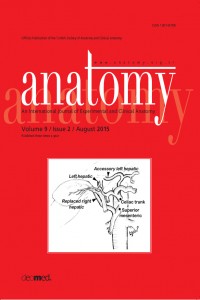Abstract
The Spanish scientist, Santiago Ramón y Cajal (1852- 1934) is regarded as one of the founders of modern neuroscience. As a talented artist and a photographer, he converted numerous microscopic images into scientific drawings which still continue to be used in neuroscience textbooks today. He was in conflict with his contemporary Camillo Golgi who supported the widely accepted idea that the nervous system was a meshwork made of continuous nerve fibers. Instead, he proposed that the nervous system consisted of individual nerve cells connected to each other by contact zones (synapse). He postulated the Law of Dynamic Polarization, which stated that the dendrites and the cell body of a neuron received information whereas the axon transmitted it to distant sites. In 1906, Nobel Prize was awarded to Cajal and Golgi in recognition of their work on the structure of the nervous system
References
- -
Abstract
The Spanish scientist, Santiago Ramón y Cajal (1852- 1934) is regarded as one of the founders of modern neuroscience. As a talented artist and a photographer, he converted numerous microscopic images into scientific drawings which still continue to be used in neuroscience textbooks today. He was in conflict with his contemporary Camillo Golgi who supported the widely accepted idea that the nervous system was a meshwork made of continuous nerve fibers. Instead, he proposed that the nervous system consisted of individual nerve cells connected to each other by contact zones (synapse). He postulated the Law of Dynamic Polarization, which stated that the dendrites and the cell body of a neuron received information whereas the axon transmitted it to distant sites. In 1906, Nobel Prize was awarded to Cajal and Golgi in recognition of their work on the structure of the nervous system
Keywords
References
- -
Details
| Primary Language | English |
|---|---|
| Subjects | Health Care Administration |
| Journal Section | ART |
| Authors | |
| Publication Date | |
| Published in Issue | Year 2015 Volume: 9 Issue: 2 |
Cite
Anatomy is the official journal of Turkish Society of Anatomy and Clinical Anatomy (TSACA).


